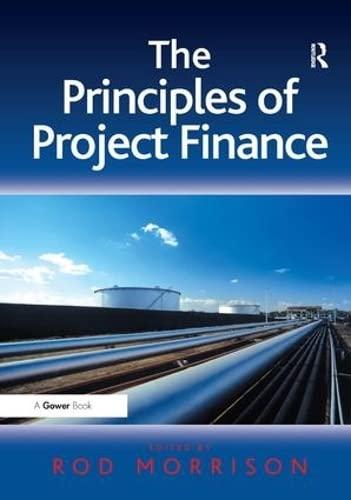Answered step by step
Verified Expert Solution
Question
1 Approved Answer
PLEASE PROVIDE SPREADSHEET WORKING For example, if there is a fixed liability equal to 1 million dollars five years from now, an institution can buy
PLEASE PROVIDE SPREADSHEET WORKING
For example, if there is a fixed liability equal to million dollars five years from now, an institution can buy a discount bond maturing in five years with a face value of million dollars. Unfortunately, there may not be the right discount bonds for a fixed future liability and coupon bonds must be used. Then an institution faces reinvestment risk on the coupons. For example, suppose that the yield curve is flat at and we have the following coupon bonds paying annual coupons:
For example, suppose that the yield curve is flat at and we have the following coupon bonds paying annual coupons:and we have a million liability five years from now.
BOND PRICES PRINCIPAL COUPON YEAR TO MATURITY B I can see what I am looking for. Where is the workings for a but no
calculation for Bond B the years maturity.
Would it be possible to put these on a spreadsheet?
There is a fixed liability equal to million dollars five years from now, an
institution can buy a discount bond maturing in five years with a face value
of million dollars. Unfortunately, there may not be the "right" discount
bonds for a fixed future liability and coupon bonds must be used. Then an
institution faces reinvestment risk on the coupons. For example, suppose
that the yield curve is flat at and we have the following coupon bonds
paying annual coupons:
For example, suppose that the yield curve is flat at and we have the
following coupon bonds paying annual coupons: and we have a million
liability five years from now.
Where is the workings for Bond B
aSuppose that the yield curve will remain unchanged for the following five
years and you have decided to use bond A to fund the liability. That is you
want to invest in bond A and invest the coupons at the prevailing interest
rates to produce a future value at the end of year five of million. How much
should you invest in bond
bNow suppose that right after you invested in bond A the yield curve
makes a parallel move d
aSuppose that the yield curve will remain unchanged for the following five years and you have decided to use bond A to fund the liability. That is you want to invest in bond A and invest the coupons at the prevailing interest rates to produce a future value at the end of year five of million. How much should you invest in bond A
bNow suppose that right after you invested in bond A the yield curve makes a parallel move downby to What is the future value five years from now of your investment?
What is the futurevalue if the yield curve moves up by to Please explain why the future value changesdifferently depending on the direction of the change in the yield curve.
cPart b shows that the future value of your investment is sensitive to interest ratefluctuations, and you face the risk that your future liabilities may not be met. You should try toimmunize this interest rate risk.
But how? Do the following:
iConstruct a portfolio of the two coupon bonds so that the future value of the portfolio is million and the duration of this portfolio is equal to five years, assuming that the yield curve will remain flat at
ii Show that if immediately after you purchased this portfolio the yield curve makes a permanent parallel downward or upward move of the future value of this portfolio at the end of year will still be approximately million. You have immunized the portfolio of the risk associated with parallel movements of the yield curve by buying a portfolio of coupon bonds so that the duration of the portfolio matches the number of years to the payment of the fixed liability.
iii. Suppose now that you have held your portfolio for one year after a decrease in the yield curve to which occurred immediately after you constructed your initial portfolio with a duration of five. There are now four years to the payment of the fixed liability. Use the money at your disposal the market value of your investment at the end of year one to construct a portfolio of coupon bonds with duration equal to four years and a future value four years hence equal to approximately million, given the new flat yield curve at Show that if the yield curve then makes a parallel upward or downward move of the future value of your portfolio four years from now will be unchanged. You have approximately funded your liability of million at the end of the fifth year. Compare the difference between the future value of your portfolio and your fixed liability here and in part b This technique is called duration matching: if you adjust your portfolio over time so that its duration always matches the years to the payment date of your fixed liabilities, you will approximately immunize the risk of parallel shifts in the yield curve.

Step by Step Solution
There are 3 Steps involved in it
Step: 1

Get Instant Access to Expert-Tailored Solutions
See step-by-step solutions with expert insights and AI powered tools for academic success
Step: 2

Step: 3

Ace Your Homework with AI
Get the answers you need in no time with our AI-driven, step-by-step assistance
Get Started


